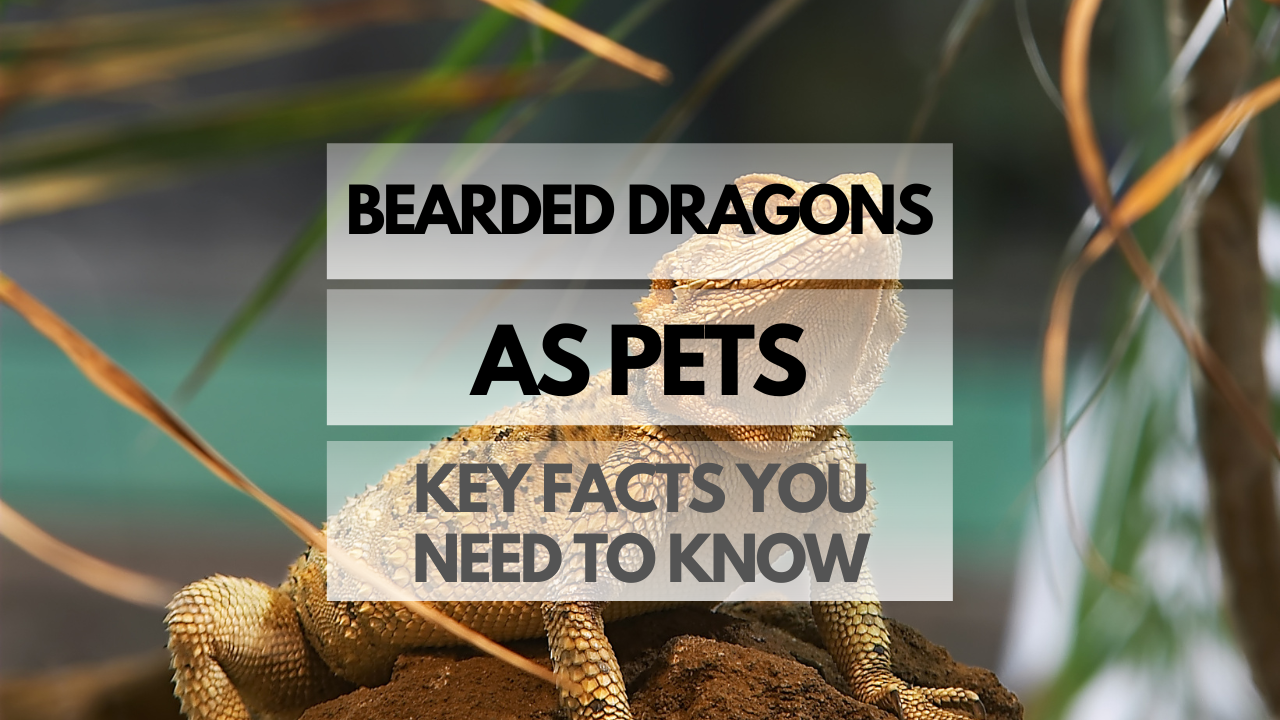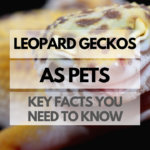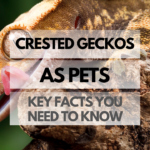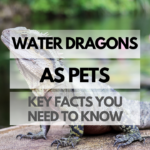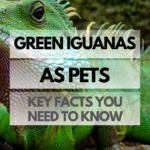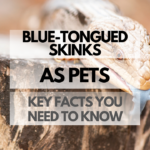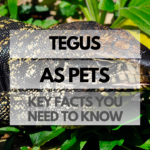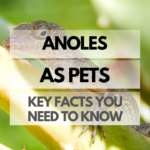Bearded Dragons, native to Australia, have become increasingly popular pets worldwide due to their unique appearance and friendly nature. In this comprehensive guide, we’ll explore everything you need to know about keeping Bearded Dragons as pets, from their care requirements to their fascinating characteristics.
Quick Reference Table: Bearded Dragon Facts
| Fact | Detail |
|---|---|
| Scientific Name | Pogona |
| Native Habitat | Australia |
| Size | 16-24 inches |
| Lifespan | 8-12 years |
| Diet | Omnivorous |
| Temperament | Friendly, docile, and curious |
How Are Bearded Dragons as Pets?
Bearded Dragons make excellent pets for reptile enthusiasts and beginners alike. They are friendly, docile, and easy to handle, making them a popular choice for families and individuals.
Pros and Cons of Bearded Dragons
Pros:
- Easy to handle and socialize
- Adaptable to a variety of environments
- Low-maintenance diet
- Minimal odor
Cons:
- Require a sizeable enclosure
- Need specialized heating and lighting
- Not suitable for households with small children or other pets
Bearded Dragon Behavior and Temperament
Known for their docile nature, Bearded Dragons are generally calm and easygoing reptiles. They enjoy being handled and are curious about their surroundings. Bearded Dragons have a unique way of communicating, including head bobbing and displaying their “beard” to assert dominance or express stress.
How Much Do Bearded Dragons Cost?
Bearded Dragons typically cost between $50 and $200, depending on the species and color morph. Initial setup costs, such as the enclosure, heating, and lighting, can range from $200 to $500. Ongoing expenses include food and supplements, which can cost approximately $20 to $40 per month.
Bearded Dragon Lifespan: Time and Commitment
Bearded Dragons have a life expectancy of 8 to 12 years in captivity, given proper care. Owning a Bearded Dragon requires a long-term commitment, including daily feeding, regular cleaning, and periodic veterinary check-ups.
Bearded Dragon Size
Adult Bearded Dragons range in size from 16 to 24 inches, including their tail. Their size requires a spacious enclosure to ensure they have enough room to move around and thermoregulate properly.
Bearded Dragon Species
There are several species of Bearded Dragons, each with its unique characteristics:
Pogona vitticeps (Central Bearded Dragon)
The most popular species for pet owners, the Central Bearded Dragon, is known for its distinctive “beard” and diverse color morphs. They are native to the arid regions of central Australia.
Pogona barbata (Eastern Bearded Dragon)
Eastern Bearded Dragons are similar in appearance to their central cousins but are typically darker in color. They are native to eastern Australia and prefer woodland habitats.
Pogona henrylawsoni (Rankin’s Dragon)
Rankin’s Dragons are smaller than other Bearded Dragon species, growing to a maximum length of 12 inches. They are native to Queensland, Australia, and are known for their social nature and ease of handling.
Bearded Dragon Colors, Looks, and Appearances
Bearded Dragons come in a wide range of colors, from sandy brown to vibrant orange and red. Some popular color morphs include Hypomelanistic, Translucent, and Leatherback. Their appearance includes a triangular head, a row ofspiny scales along their sides, and a distinctive “beard” under their chin, which they can puff up when feeling threatened or asserting dominance.
Bearded Dragon Care Guide
Bearded Dragon Habitat: Tank and Housing
Appropriate Bearded Dragon Tank Size
Adult Bearded Dragons require a minimum tank size of 40 gallons, with a 4-foot long, 2-foot wide, and 2-foot tall enclosure being ideal. Juvenile Bearded Dragons can start in a smaller 20-gallon tank but will need an upgrade as they grow.
Types of Enclosures
Glass terrariums and wooden vivariums are the most common types of enclosures for Bearded Dragons. Glass terrariums offer better visibility, while wooden vivariums provide better insulation and temperature control.
Substrate Options
Safe substrate options for Bearded Dragons include reptile carpet, newspaper, and non-adhesive shelf liner. Loose substrates such as sand should be avoided due to the risk of impaction.
Heating and Lighting Requirements
Bearded Dragons need a basking spot with a temperature of 95-110°F and a cooler area around 80°F. A ceramic heat emitter or basking light can be used for heating. UVB lighting is essential for their health, with a 10-12 hour light cycle recommended.
Humidity and Temperature Control
Maintain a humidity level of 30-40% in the enclosure, and monitor temperatures with digital thermometers placed at both ends of the tank. A hygrometer can be used to measure humidity levels.
Furnishings and Decorations
Provide your Bearded Dragon with climbing branches, basking platforms, and hiding spots. Artificial plants and rocks can be used to create a natural-looking environment.
Cleaning and Maintenance
Spot clean the enclosure daily for feces and uneaten food. Perform a thorough cleaning and disinfecting of the tank and accessories every 4-6 weeks.
Bearded Dragon Food: Diet and Nutrition
Feeding Frequency and Schedule
Juvenile Bearded Dragons should be fed twice daily, while adults can be fed once per day. Offer a mix of insects and vegetables, rotating the variety to ensure a balanced diet.
What do Bearded Dragons Eat?
Bearded Dragons are omnivorous, eating a mix of insects and vegetables. Staple insects include crickets, mealworms, and dubia roaches. Vegetables can include collard greens, dandelion greens, and butternut squash.
Bearded Dragon Treats
Occasional treats can include waxworms, hornworms, and fruits like berries and melon. Treats should be given sparingly to prevent obesity and nutritional imbalances.
Foods to Avoid
Avoid feeding your Bearded Dragon avocados, lettuce, spinach, and insects caught in the wild, as they may contain parasites or pesticides.
Supplements and Vitamins
Dust insects with calcium powder 2-3 times per week and multivitamin powder once per week to ensure proper nutrition. UVB lighting also helps with vitamin D3 synthesis, which is essential for calcium absorption.
Hydration
Provide a shallow water dish for your Bearded Dragon to drink from and mist the enclosure lightly once per day to maintain humidity.
Handling and Socialization
Taming and Bonding
Bearded Dragons are generally friendly and docile creatures, but it’s essential to establish trust and build a bond with your pet. Start by spending time near their enclosure and talking to them softly. Gradually, you can begin to handle them for short periods, increasing the duration as they become more comfortable.
Safe Handling Techniques
When handling your Bearded Dragon, always support their entire body and avoid grabbing them by the tail. It’s important to be gentle and calm to prevent causing stress or injury to your pet.
Signs of Stress and Illness
Bearded Dragons may exhibit signs of stress or illness, such as darkening of their beard, glass surfing, or lethargy. If you notice any of these behaviors, consult a reptile veterinarian and reevaluate your pet’s living conditions.
Introducing Bearded Dragons to Other Pets
When introducing your Bearded Dragon to other pets, always take precautions and closely monitor their interactions. Bearded Dragons can coexist with other reptiles, but it’s essential to ensure that their living conditions and temperaments are compatible.
Health and Wellness
Common Health Issues
Bearded Dragons may suffer from various health issues, such as metabolic bone disease, impaction, or respiratory infections. Regular check-ups with a reptile veterinarian can help you identify and address these issues early on.
Signs of a Healthy Bearded Dragon
A healthy Bearded Dragon will have clear eyes, a full and rounded tail, and an alert and active demeanor. Regularly monitor your pet’s appearance and behavior to ensure they remain in good health.
Preventative Care
Providing a proper diet, habitat, and lighting are crucial for maintaining your Bearded Dragon’s health. Regular cleaning of their enclosure and monitoring for signs of illness can also help prevent health issues.
Finding a Reptile Veterinarian
When looking for a reptile veterinarian, search for one with experience treating Bearded Dragons. You can consult online resources, local reptile clubs, or your local pet store for recommendations.
Breeding and Reproduction
Determining Gender
Bearded Dragons can be sexed by examining the femoral pores and hemipenal bulges near their vent. Males typically have larger femoral pores and visible hemipenal bulges, while females have smaller pores and less noticeable bulges.
Mating Behavior and Courtship
During courtship, male Bearded Dragons may perform head bobbing, beard puffing, and circling the female. If the female is receptive, she may respond with submissive behaviors, such as arm waving or head-bobbing.
Gravidity and Egg-laying
After successful mating, a female Bearded Dragon will become gravid and lay a clutch of eggs within 4-6 weeks. Provide a suitable laying site within the enclosure, such as a moist hide filled with a mixture of sand and soil.
Incubation and Hatching
Bearded Dragon eggs should be incubated at a temperature of 82-86°F (28-30°C) and a humidity level of 70-80%. The eggs will typically hatch within 55-75 days.
Caring for Hatchlings
Once the hatchlings emerge, provide them with proper nutrition and a smaller-scaled version of the adultBearded Dragon habitat. Monitor their growth and development closely, and separate them as needed to prevent overcrowding or aggression.
Are Bearded Dragons Legal?
While Bearded Dragons are legal to own as pets in most countries, it’s essential to check your local and state regulations to ensure compliance with any restrictions or licensing requirements.
Names for Bearded Dragons
Choosing a fun and interesting name for your Bearded Dragon can be a delightful part of pet ownership. Some popular options include Spike, Draco, Smaug, Blaze, and Luna. The possibilities are endless, so feel free to get creative and pick a name that suits your pet’s personality!
Conclusion: Should You Own Bearded Dragons as Pets?
Bearded Dragons can make amazing pets for someone willing to provide the proper care, attention, and commitment. They are friendly, engaging, and relatively low-maintenance compared to other reptile species. With the right knowledge and dedication, owning a Bearded Dragon can be a rewarding and enjoyable experience.
FAQ for Pet Bearded Dragons
- Q: Are Bearded Dragons good pets?
- A: Yes, Bearded Dragons make great pets. They are low-maintenance, friendly, and relatively easy to care for.
- Q: Can Bearded Dragons eat grapes?
- A: Yes, Bearded Dragons can eat grapes occasionally as a treat. However, they should be fed in moderation due to their high sugar content.
- Q: Can Bearded Dragons eat bananas?
- A: Bearded Dragons can eat bananas occasionally, but they should be fed sparingly due to their high sugar content.
- Q: Can Bearded Dragons eat strawberries?
- A: Yes, Bearded Dragons can eat strawberries occasionally as a treat.
- Q: Can Bearded Dragons eat apples?
- A: Yes, Bearded Dragons can eat apples in small amounts and with the skin removed. Make sure to remove the seeds as they are toxic.
- Q: Can Bearded Dragons eat spinach?
- A: Spinach should be fed sparingly to Bearded Dragons, as it contains high levels of oxalates, which can interfere with calcium absorption.
- Q: Can Bearded Dragons eat tomatoes?
- A: Tomatoes can be fed to Bearded Dragons occasionally and in small amounts, as they are acidic and can cause stomach upset if fed too often.
- Q: Can Bearded Dragons eat carrots?
- A: Bearded Dragons can eat carrots occasionally, but they should be finely chopped or grated to make them easier to digest.
- Q: Can Bearded Dragons eat cucumbers?
- A: Bearded Dragons can eat cucumbers occasionally, but they should be fed in moderation due to their high water content and low nutritional value.
- Q: Can Bearded Dragons eat watermelon?
- A: Bearded Dragons can eat watermelon occasionally as a treat, but it should be fed in moderation due to its high sugar and water content.
- Q: Can Bearded Dragons eat broccoli?
- A: Bearded Dragons can eat broccoli occasionally, but it should be fed in moderation due to its potential to cause gas and bloating.
- Q: Can Bearded Dragons eat blueberries?
- A: Yes, Bearded Dragons can eat blueberries occasionally as a treat.
- Q: Can Bearded Dragons eat celery?
- A: Bearded Dragons can eat celery occasionally, but it should be chopped into small pieces to make it easier to digest.
- Q: Can Bearded Dragons eat cabbage?
- A: Bearded Dragons can eat cabbage occasionally, but it should be fed in moderation due to its potential to cause gas and bloating.
- Q: Can Bearded Dragons eat cilantro?
- A: Bearded Dragons can eat cilantro occasionally as a treat.
- Q: Can Bearded Dragons eat kale?
- A: Bearded Dragons can eat kale, but it should be fed in moderation due to its high levels of oxalates, which can interfere with calcium absorption.
- Q: Can Bearded Dragons eat blackberries?
- A: Yes, Bearded Dragons can eat blackberries occasionally as a treat.
- Q: Can Bearded Dragons eat oranges?
- A: Bearded Dragons should not eat oranges or other citrus fruits, as they are too acidic and can cause digestive issues.
- Q: Can Bearded Dragons eat avocados?
- A: Avocado is toxic to Bearded Dragons and should not be fed to them.
- Q: Can Bearded Dragons eat corn?
- A: Bearded Dragons can eat corn occasionally, but it should be fed in moderation due to its high sugar content.
- Q: Can Bearded Dragons eat asparagus?
- A: Bearded Dragons can eat asparagus occasionally, but it should be fed in moderation due to its potential to cause gas and bloating.
- Q: How often do Bearded Dragons eat?
- A: Bearded Dragons eat daily. Juveniles require multiple feedings a day, while adults can be fed once a day.
- A: Bearded Dragons have a lifespan of 8-12 years in captivity, with proper care.
- Q: Where are Bearded Dragons native?
- A: Bearded Dragons are native to the arid regions of Australia.
- Q: Are Bearded Dragons friendly?
- A: Yes, Bearded Dragons are generally friendly and docile creatures, making them great pets for beginners and experienced reptile enthusiasts alike.
- Q: Do Bearded Dragons bite?
- A: Bearded Dragons may bite if they feel threatened or stressed, but they are generally not aggressive animals. Proper handling and care can minimize the risk of bites.
- Q: Do Bearded Dragons like to be held?
- A: Bearded Dragons typically enjoy being held and interacting with their caregivers, but it is essential to handle them with care and respect their boundaries.
- Q: Are Bearded Dragons nocturnal?
- A: Bearded Dragons are diurnal, which means they are active during the day and sleep at night.
- Q: Do Bearded Dragons pee?
- A: Bearded Dragons excrete a combination of solid waste and urates, which are similar to the consistency of toothpaste. They do not urinate like mammals.
- Q: Do Bearded Dragons hibernate?
- A: Bearded Dragons undergo a period of dormancy called brumation, which is similar to hibernation. During this time, they may eat less, sleep more, and become less active.
- Q: Do Bearded Dragons make noise?
- A: Bearded Dragons are generally quiet animals, but they may make occasional hissing or puffing sounds when they feel threatened or stressed.
- Q: Are Bearded Dragons venomous or poisonous?
- A: Bearded Dragons are neither venomous nor poisonous. They are harmless to humans and make excellent pets.
- Q: Are Bearded Dragons smart?
- A: Bearded Dragons are relatively intelligent reptiles and can recognize their caregivers and learn simple routines.
- Q: Do Bearded Dragons need heat at night?
- A: Bearded Dragons need a temperature drop at night, but it should not fall below 65-70°F (18-21°C). A heat source may be needed during colder months to maintain this temperature range.
- Q: Do Bearded Dragons lay eggs?
- A: Yes, female Bearded Dragons lay eggs, even without the presence of a male. However, eggs laid without mating will be infertile.
- Q: Do Bearded Dragons smell?
- A: Bearded Dragons themselves do not have a strong odor, but their enclosures can develop unpleasant smells if not cleaned regularly.
Q: How long do Bearded Dragons live?

